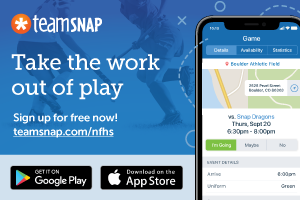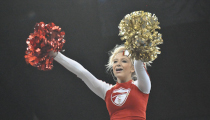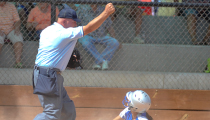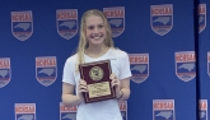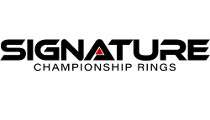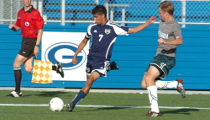- Home
- Sports Resource Content
- Safety Tips for the Track and Field Season
Coaches and Athletic Directors have a lot on their plates during track season. Facility safety should be a top priority and needs to be addressed at the beginning of the season. Here are a few ways (of many) to increase the safety of your athletes, staff, and spectators…
Pole Vault / High Jump
[See NFHS Rules 6-4 (High Jump), 6-5 (Pole Vault) for specific details.]
- Inspect your landing systems to make sure the athlete can safely fall into the pit after every jump. Most pits can last up to 12 years, however, elements such as weather and rodents can cause the foam to deteriorate faster. If the athlete is close to “bottoming-out”, it is time to replace your pit.
- Don’t leave any concrete around the landing area exposed. Cover concrete or other hard surfaces around the landing area with perimeter padding.
Throws
[See NFHS Rule 6-6 for specific protective cage details.]
- Make sure there is adequate netting around your throwing cage and sector. There should be no holes in the protective netting.
- Instruct everyone at practice and meets to keep their heads up while a throwing event is taking place.
- Ensure all throwing occurs from the designated circle, always face the circle when any athlete is warming up and throwing and ensure no one is in the throwing sector during throws.
- Clearly mark the sector lines.
Long Jump / Triple Jump
[See NFHS Rule 6-9 for specific details.]
- Fill the sand pit with fresh sand at least 12 inches deep. Rake the sand to eliminate clumps and hard obstructions. It’s a good idea during a meet to dampen the sand slightly for ease of measurement.
- Take-off boards should be inspected to make sure they are solid and have not worn to the point where an athlete could possibly slip and injure themselves at take-off.
Running Events
- Inspect your hurdles and starting blocks regularly. Tighten all nuts and bolts that may have loosened with use or during the off-season.
- If your track has a raised curb to mark the inner edge of the track, make sure it hasn’t moved over the winter and is in good repair.
If you have any concerns or questions regarding the safety of your track and field facility, contact our Official Partner at Gill Athletics for a free consultation. Gill Athletics values your commitment in keeping your athletes safe and designs equipment that exceeds safety requirements for superior long-term performance.
Gill Athletics
Most Recent Articles
- nfhs news NFHS Learning Center Unveils School Honor Roll Program
- NFHS Network Contact Information
- nfhs news Shout-out to Health-Care Workers and State High School Associations
- state news Stadiums Across Colorado Light Up to Show Support for Students
- gymnastics-girls article ‘They became a family’: How New Castle gymnastics qualified for state for first time since 2002
